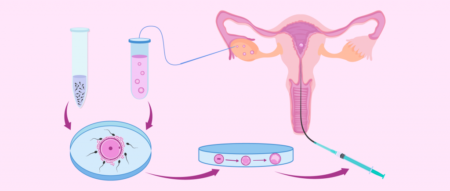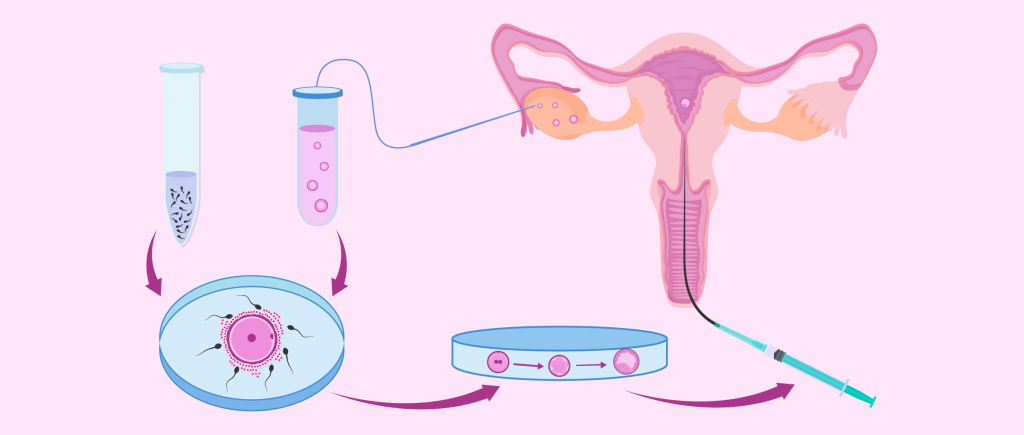 We explain what fertilization is, what its phases are like and when it is internal or external. Also, human fertilization and conception.
We explain what fertilization is, what its phases are like and when it is internal or external. Also, human fertilization and conception.
What is fertilization?
In biology , fertilization is known as the process of fusion of reproductive cells or gametes, one from each of the parents , to create a zygote from which a totally new individual will be formed. To do this, both cells (male and female) must come together and fuse their cell nuclei , mixing their genetic material to obtain a new and entire genome.
Fertilization is a key moment of sexual reproduction , common between animals and plants , which constitutes a new individual from the contribution of its two parents. Therefore, it is the stage that follows copulation or intercourse, if any, in which both individuals prepare to release their gametes. For fertilization to occur normally, both parents are required to belong to the same species and to be fertile and compatible.
The details regarding how this process occurs can vary substantially from one species to another, taking place inside or outside the female body, for example, or even existing species capable of self-fertilization without the participation of the other sex. However, most of the time fertilization involves several well-differentiated stages, which are:
- Phase 1: contact between gametes occurs. Sperm are chemically attracted to the egg, towards which they move using their flagella. Once together, a chemical recognition takes place that confirms (or not) their compatibility and the minimum conditions for union. Only then does the penetration of the substances that surround the ovum (the corona radiata) occur , thanks to the joint action of the spermatozoa.
- Phase 2: Penetration of the ovum occurs. Said penetration occurs thanks to the rupture of the zona pellucida of the ovum by means of the contents of the acrosome, the small deposit of hydrolytic proteins at the tip of each spermatozoon, and ends as soon as one of them penetrates into the interior of the ovum (or oocyte). , leaving out his scourge. In general, only one spermatozoon manages to penetrate the interior of the ovum.
- Phase 3: fusion of cell nuclei. Once the oocyte has penetrated, the acrosome reaction takes place, through which the spermatozoon fuses its plasmatic membrane with that of the ovum, allowing its contents to spread within the latter, and the two cell nuclei to meet. Then a dynamic of nuclear and genetic fusion occurs, in which each cell contributes half of the genome of each parent, to form a complete DNA : that of a new individual.
- Phase 4: formation of the zygote. Once the nuclei are fused, the zygote is ready to begin its growth and the multiplication of its content, thus beginning the creation of a new individual endowed with its own cells.
See also: Spermatogenesis
internal and external fertilization
In external fertilization the gametes are released into the environment.
Two types of fertilization in animals are usually distinguished, depending on where the gametes meet: internal and external fertilization.
- Internal fertilization. It occurs within the body of the female parent, in the uterus or adjacent to it. To do this, copulation must first take place, in which the male parent enters the female’s body to inject her sperm inside. The zygote then adheres to the maternal uterus (in the case of viviparous animals ) or is expelled in the form of an egg (in the case of oviparous animals ). Human fertilization or bird fertilization are clear examples of these two trends.
- External fertilization. It occurs in the environment , in which both parents release their gametes, in such a way as to promote contact. The zygotes produced in this way can then adhere to rocks, plants or even be carried on the body of one of the parents, depending on the species and its strategies to guarantee the survival of the offspring. This type of fertilization is typical of aquatic animal species , especially invertebrates .
Fertilization and conception
The terms “fertilization” and “conception” are often used interchangeably. However, in more specialized fields, a difference between the two can be recognized, according to which it is preferable to use “fertilization” for the entire process that goes from the release of gametes to the production of the zygote.
On the contrary, “conception” is restricted to the very moment in which a sperm penetrates the ovum and triggers the set of cellular changes that lead to the production of an embryo.
human fertilization
Fertilization in the case of human beings is sexual, internal and crossed (that is, each parent provides a type of gametes), and it takes place in the fallopian tubes, within the female reproductive system . This means that intercourse and the release of sperm that reach the uterus must first have occurred, that is, a sexual relationship. In this it is similar to that of all known mammals .
